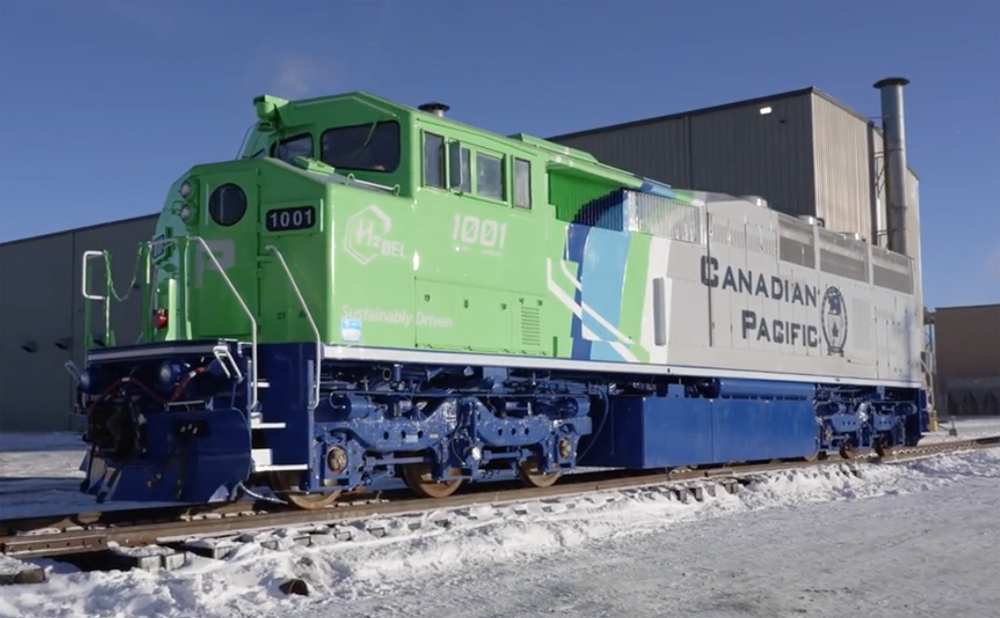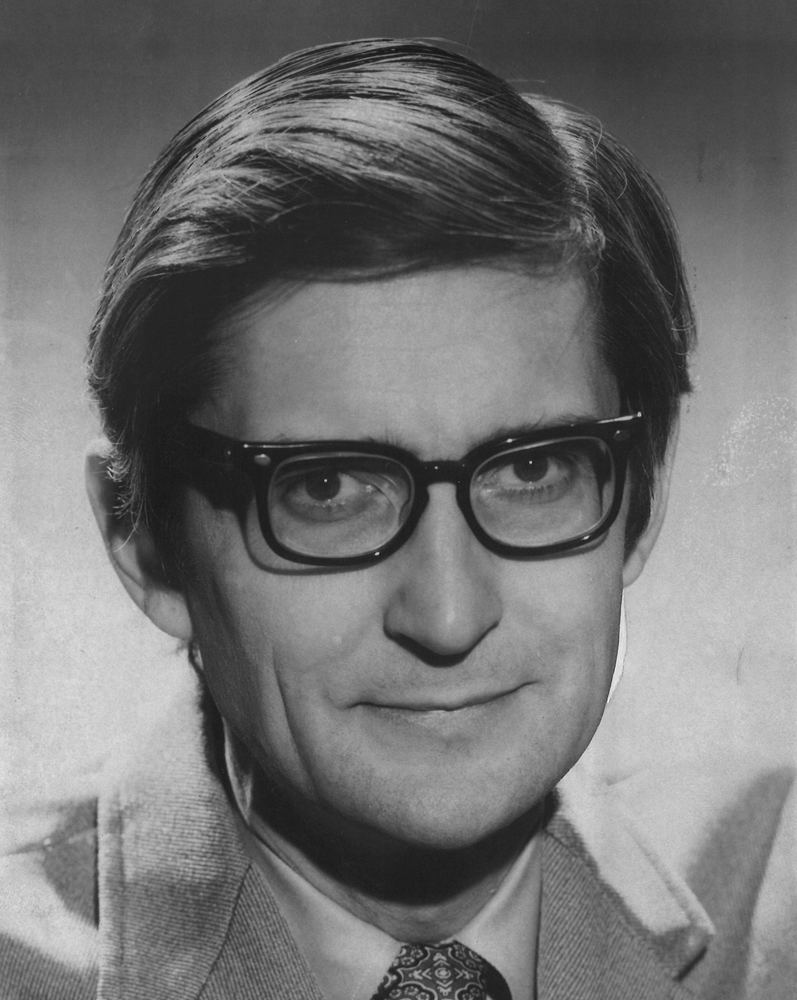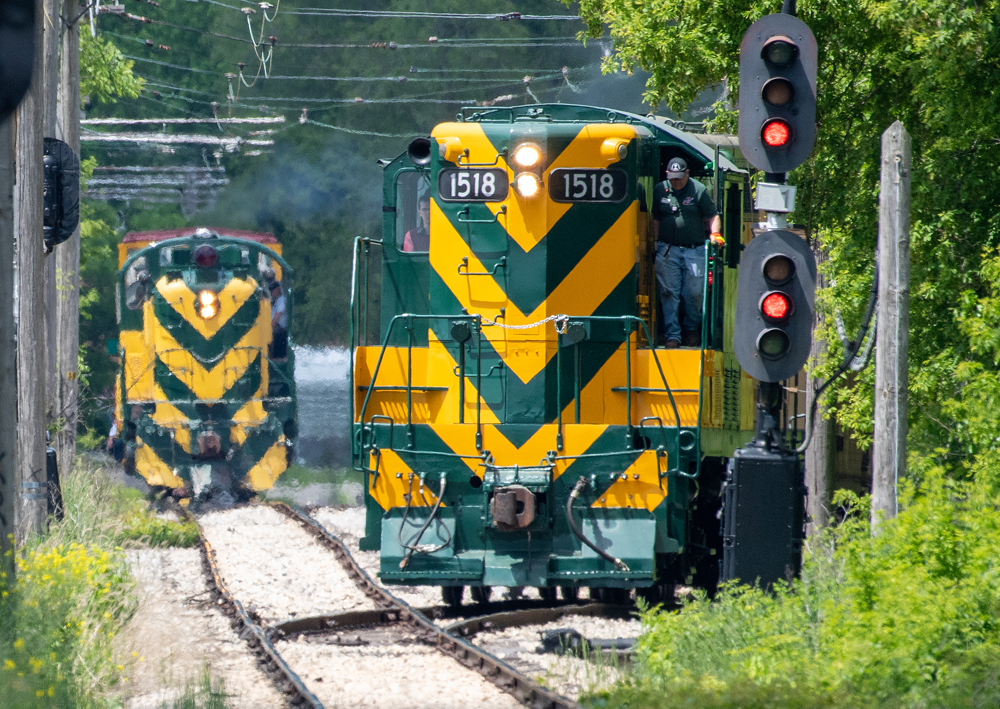
BURNABY, British Columbia — Ballard Power Systems will provide 18 additional hydrogen fuel cell engines to Canadian Pacific Kansas City for expansion of the CPKC hydrogen locomotive program, Ballard announced today (July 27).
The 200-kilowatt engines are planned for delivery this year. Specific details on CPKC’s plans for their locomotive use were not immediately available.
Ballard has previously supplied 20 fuel cell engines to CPKC with a combined power of 4 megawatts for use in three types of locomotives that have been undergoing testing in 2022 and 2023. Success of these tests, along with CPKC’s efforts to reduce emissions, have led to expansion of the hydrogen program. CPKC recently announced a plan to use hydrogen locomotives in coal train service [see “CPKC, Teck Resources pilot program …,” Trains News Wire, May 4, 2023], as well as a joint project with CSX Transportation to develop hydrogen conversion kits for diesel-electric locomotives [see “CPKC and CSX team up …,” News Wire, June 22, 2023].
“Our hydrogen locomotive program has the potential to significantly reduce greenhouse gas emissions from locomotive operations, supporting the transition to a lower-carbon future in the freight rail sector,” Dr. Kyle Mulligan, CPKC’s assistant vice president, operations technology, said in a press release. “We are excited to expand development of these pioneering zero-emission locomotives with collaborators like Ballard.”
Seungsoo Jung, Ballard’s vice president of rail and emerging markets, said the company is “thrilled to support our partner, CPKC, as it expands its development of fuel cell-powered locomotives to decarbonize critical transportation routes. Our teams have been working hand in hand to ensure success of this program and we are excited for the future with CPKC to help scale its growing hydrogen fleet.”














”
Most industrial hydrogen is cracked from natural gas.
”
That’s the key.
Add to that you’re having to use 3 times as much energy to create the hydrogen than you get out of it.
It’s worth testing.
But anyone thinking this leads to a green utopia, well, their cornbread ain’t done right in the middle.
Another Waverly, Tennessee waiting to happen. In that case a liquid propane tanker blew up after accident on old L & N. 16 died and 35% of town was destroyed. That was in rural fly over America. Picture that accident in a densely populated city.
The derailment of a hydrogen fuelled locomotive could make East Palestine look like a picnic. But, since it’s “for the environment”, the government will cover any losses, right?
Do you think the risk will be greater than the natural gas fueled locomotives on the FEC? Natural gas (methane) and hydrogen are both lighter than air gases that rise into the atmosphere and dissipate when released. Both gases are explosive.
Ballard Power Systems’ vision is to deliver fuel cell power for a sustainable planet. Ballard zero-emission PEM fuel cells are enabling electrification of mobility, including buses, commercial trucks, trains, marine vessels, and stationary power.
Dr. Güntürk Üstün
No financial details of the order were disclosed.
Dr. Güntürk Üstün
Maybe someone can help me with this, 200kw is roughly 250hp, so how many of these hydrogen engines are they putting in one of these road locomotives to make it worthwhile?
Ballard makes a range of fuel cells that provide anywhere from 45kW to 200kW. Just like any generator these units can be combined to increase the gross output.
However it appears the Ballard/CPKC design will be a series design with the fuel cells providing charge to a large set of batteries, which then power the trucks. (DC-DC-AC)
The 200kW model weighs about 300 kilos with all of its attachments and cooling systems. So if one engine uses 10 of the 200kW models, they could supply the equivalent of 2600hp using the batteries as the storage medium.
Thanks John, will be a lot of equipment squeezed into the loco carbody
My question is this: How much electricity is used (and thus, more fossil fuels) to create the hydrogen for these locos? Would a jump in the demand for hydrogen thus increase the fossil fuels used to create it?
Canadian power grids are much less reliant on fossil fuels than their American counterparts, with extensive input from hydro, solar, wind and nuke (the latter mainly in Ontario and New Brunswick). While the overall efficiency of the hydrogen production process is still on the low side, using excess renewable or nuke power for water electrolysis would result in no net emission.
I can see CSX interests in the program. They have service to several LNG facilities on the east coast. Most industrial hydrogen is cracked from natural gas.